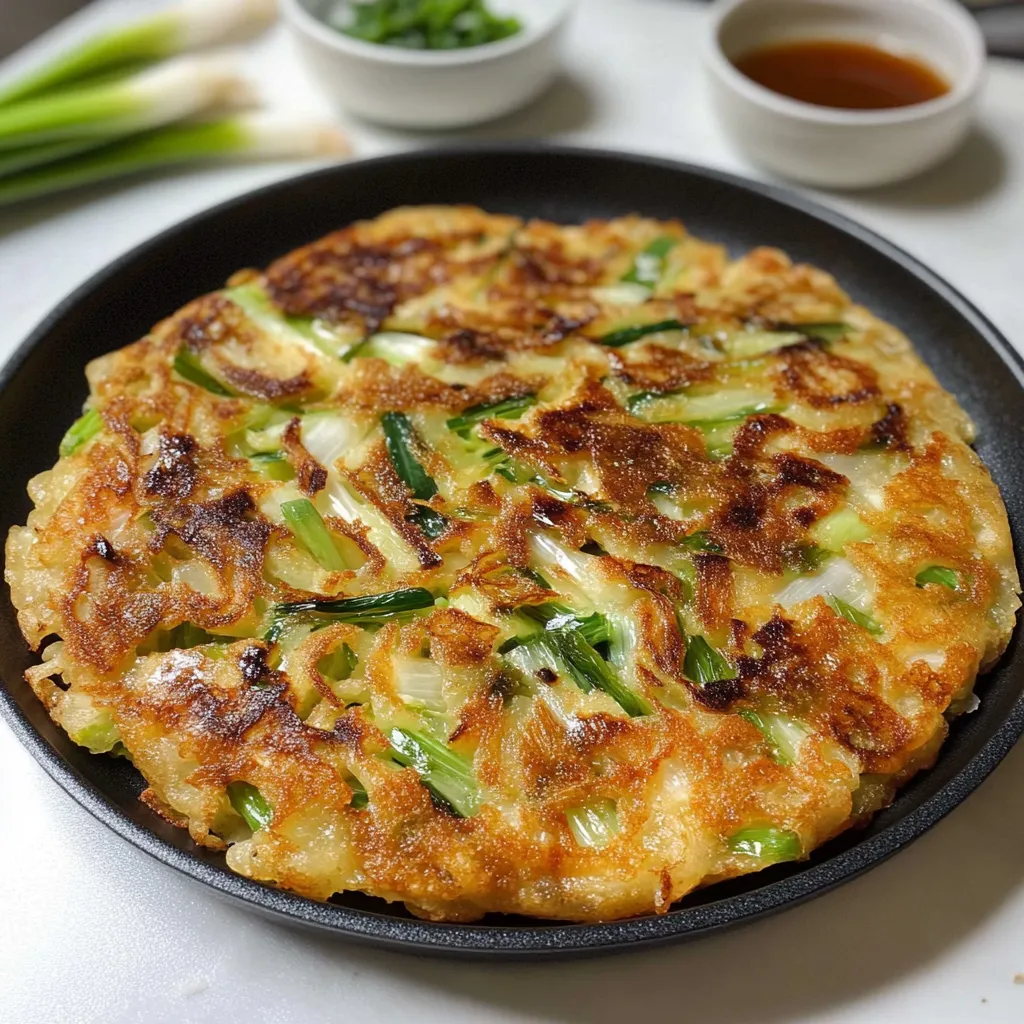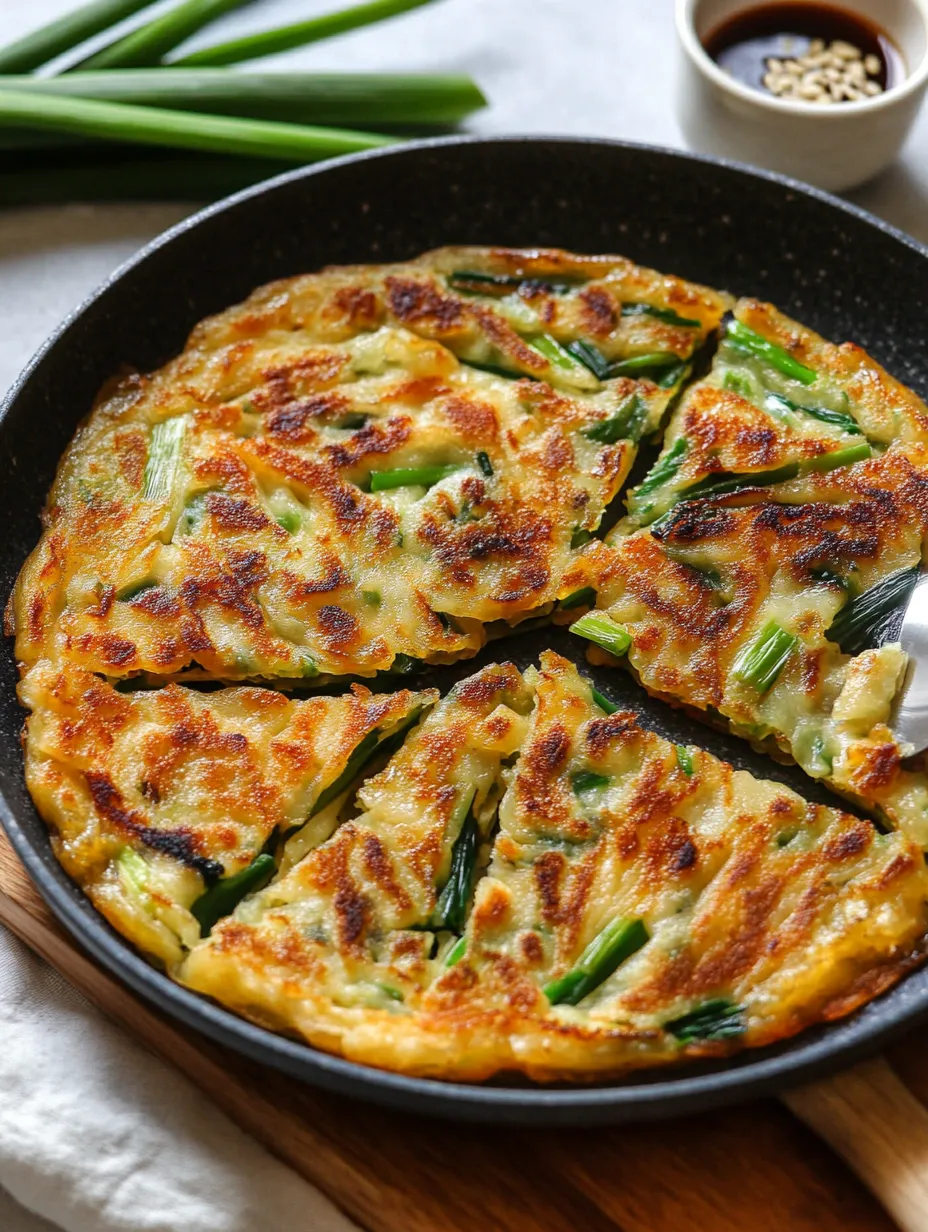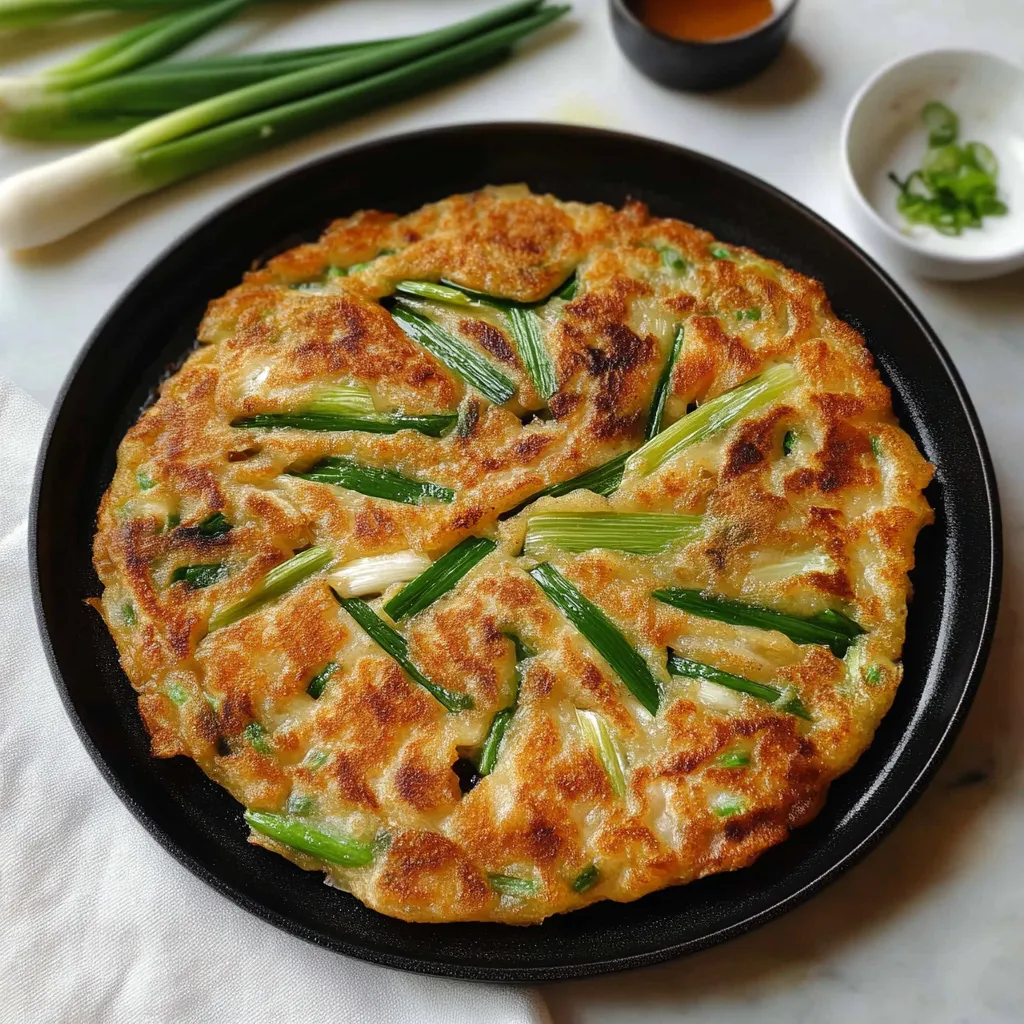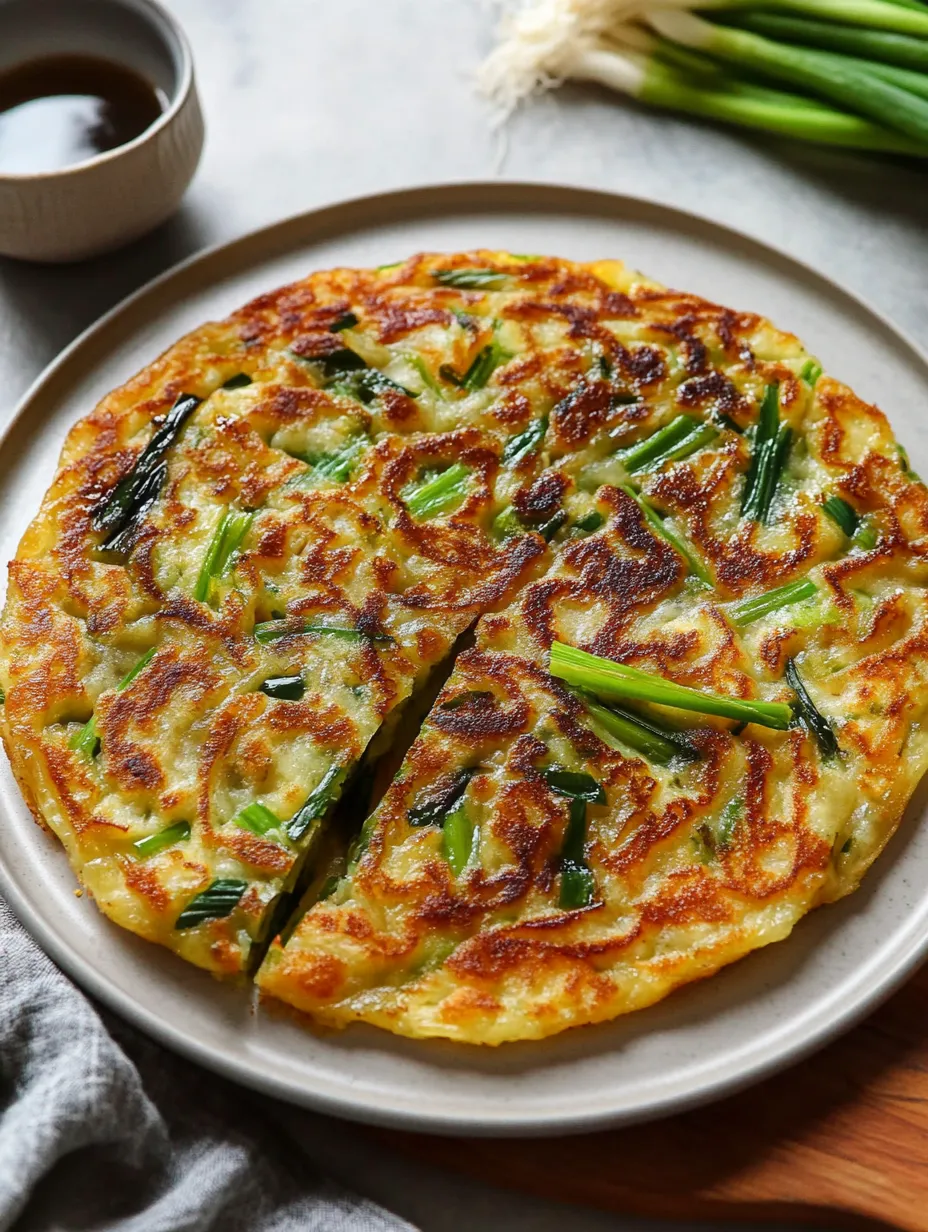 Pin
Pin
Pajeon is the ultimate crispy-chewy Korean scallion pancake that delivers incredible flavor with minimal effort. Packed with fresh green onions and served with a tangy soy dipping sauce, this savory treat transforms simple ingredients into something extraordinary. I first encountered pajeon at a small Korean restaurant during a rainy afternoon, and it's been my go-to comfort food ever since, perfect as an appetizer or light meal.
Last weekend, I served these at a casual dinner gathering, and my friend who lived in Seoul for three years said they were the most authentic homemade pajeon she'd tasted. The secret? Don't skimp on the oil and use ice-cold water in the batter.
Essential Ingredients and Selection Tips
- Green Onions: Choose fresh, vibrant ones with no yellowing for the best flavor
- Potato Starch: Creates that signature chewy-crisp texture (cornstarch works in a pinch)
- Baking Powder: The secret ingredient for extra crispiness many recipes miss
- Chicken Bouillon Powder: Adds depth of flavor without complicating the ingredient list
- Very Cold Water: Almost icy water creates steam when cooking, resulting in a lighter texture
- Neutral Oil: Use an oil with a high smoke point like vegetable or avocado oil
Detailed Cooking Instructions
- Prepare Green Onions: Wash thoroughly and pat completely dry - excess moisture creates soggy pancakes. Split thicker white parts lengthwise and cut into 1.5-inch pieces. This makes the pancake easier to eat and ensures even cooking.
- Mix Batter Ingredients: Combine flour, potato starch, baking powder, salt, bouillon powder, garlic powder, and onion powder in a bowl with green onions. Add ice-cold water and mix just until combined - overmixing develops gluten and makes tough pancakes.
- Heat Pan Properly: Use a large non-stick skillet over medium-high heat with generous oil (about 2.5 tablespoons). The oil should shimmer slightly but not smoke. Proper heating prevents sticking and ensures crispiness.
- Layer Green Onions First: Add green onions to hot oil, spreading them evenly before pouring batter over. This technique creates a pancake with visible scallions and better texture than mixing everything together.
- Pour Batter Over Onions: Pour remaining batter over arranged onions, filling any gaps. Swirl gently to create an even layer without disturbing onion arrangement.
- Monitor Heat Level: Reduce to medium heat and cook until golden brown on bottom with small bubbles forming throughout, about 3 minutes. Proper heat ensures the pancake cooks through without burning.
- Flip with Confidence: Wait until pancake is set and golden before flipping. Use a large spatula and flip in one confident motion. Add remaining oil around edges after flipping.
- Press for Extra Crispness: Press down occasionally with spatula while cooking second side to maximize contact with the pan, creating crispier texture.
- Cut and Serve Immediately: Transfer to cutting board and slice into squares or wedges. Serve hot for maximum crispiness.
- Mix Simple Dipping Sauce: Combine soy sauce, rice vinegar, sesame oil, and chopped green onions. The tangy-savory combination perfectly complements the pancake.

I learned the importance of patience when making pajeon from a Korean friend who laughed at my first attempt. "You must wait," she said, "until you see the edges become golden. Rushing makes broken pancakes."

Serving Traditions
In Korea, pajeon is particularly popular on rainy days, often paired with makgeolli (rice wine). There's something deeply satisfying about the contrast between the crispy, savory pancake and the fizzy, slightly sweet wine while listening to raindrops. I've adopted this tradition myself, keeping pancake ingredients on hand for stormy evenings when comfort food is most welcome.
Versatility and Variations
What I love most about this recipe is its adaptability. While the classic version focuses on green onions, you can easily incorporate other ingredients based on what you have available. Sometimes I add thinly sliced mushrooms or colorful bell peppers for extra nutrition and visual appeal. For a heartier version, try adding small cooked shrimp or squid pieces to create haemul pajeon (seafood pancake), another Korean favorite that transforms this simple dish into a more substantial meal.
Cultural Connection
Making pajeon connects me to Korean culinary traditions that value simplicity and balance. This humble pancake appears at family gatherings, in street food stalls, and on restaurant menus throughout Korea - appreciated by people of all ages and backgrounds. The communal aspect of cutting the pancake into pieces for sharing embodies the Korean value of togetherness during meals. Each time I prepare this recipe, I'm participating in a food tradition that has brought people together for generations.

Final Thoughts
These crispy pancakes have become my reliable go-to when I need a quick but impressive dish. The satisfying sizzle as the batter hits the hot oil, the mouthwatering aroma of green onions cooking, and that first perfect bite with the tangy dipping sauce create an experience that far exceeds the simplicity of its ingredients. The beauty of pajeon lies in how it transforms humble ingredients into something extraordinary through proper technique. It reminds me that cooking doesn't always require rare ingredients or complicated methods - sometimes the most satisfying dishes come from mastering the basics and paying attention to the small details that make all the difference.
Final Tips:
- For a gluten-free version, replace all-purpose flour with rice flour or a gluten-free blend
- Make the dipping sauce first so flavors have time to meld while preparing the pancake
- Leftover pajeon reheats beautifully in an air fryer at 350°F for 5 minutes
- For a prettier presentation, reserve some green onion tops to sprinkle over freshly cooked pancakes
- Double the recipe and freeze uncooked pancake batter portions for quick future meals
Recipe FAQs
- → Why use cold water?
- Cold water helps create a crispier pancake texture.
- → Can I use different starches?
- Only use potato or corn starch, not rice or tapioca starch.
- → Why dry the green onions?
- Wet onions will make the pancake soggy instead of crispy.
- → Can I make it ahead?
- Best served immediately while crispy.
- → What pan works best?
- Large non-stick pan ensures easy flipping and even cooking.
